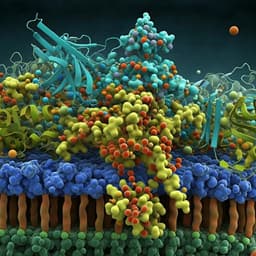
Physics
A plethora of long-range neutrino interactions probed by DUNE and T2HK
S. K. Agarwalla, M. Bustamante, et al.
Dive into the future of particle physics with cutting-edge research by Sanjib Kumar Agarwalla, Mauricio Bustamante, Masoom Singh, and Pragyanprasu Swain, exploring new flavor-dependent neutrino interactions that could reshape our understanding of the universe. Discover how DUNE and T2HK experiments are poised to unveil potential new interactions that challenge the Standard Model.
~3 min • Beginner • English
Related Publications
Explore these studies to deepen your understanding of the subject.







